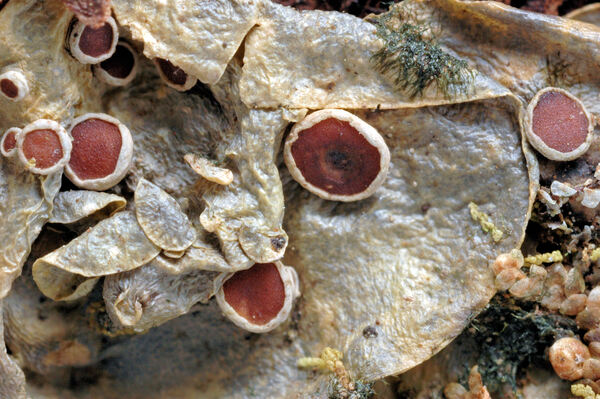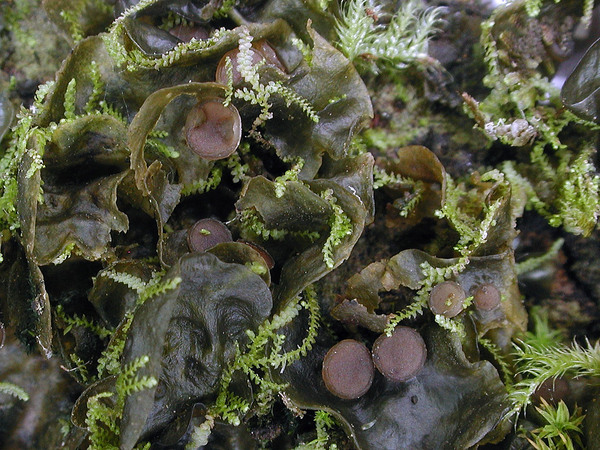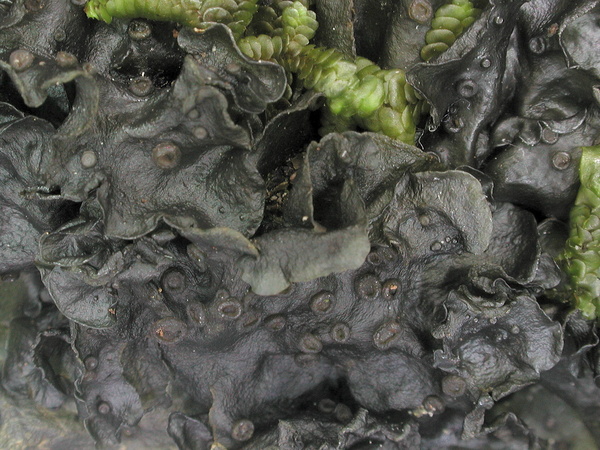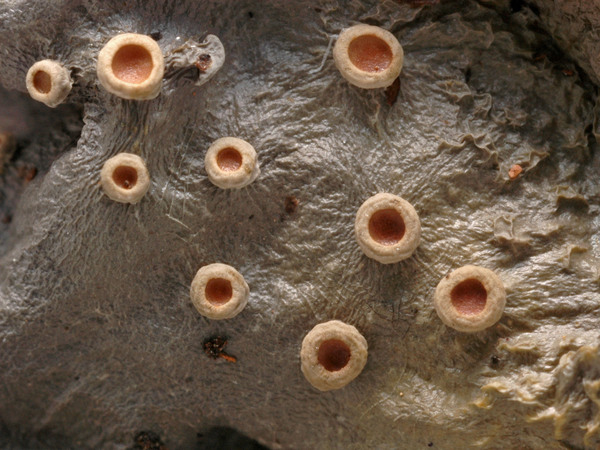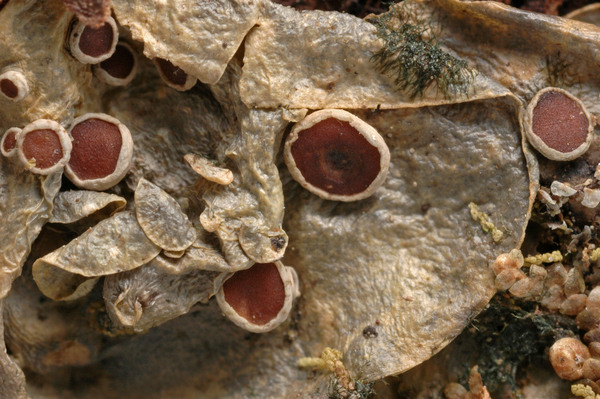Leptogium cochleatum (Dicks.) P.M. Jørg. & P. James
Lichenologist, 15: 113, 1983. Basionym: Lichen cochleatus Dicks. - Fasc. Crypt. Brit., 1: 13, 1785.
Synonyms: Leptogium azureum auct. p.p.
Distribution: C - Laz. S - Cal (Puntillo 1996), Si (Grillo 1998, Grillo & Caniglia 2004, Ottonello & al. 2011).
Description: Thallus foliose, subgelatinous when wet, lead-grey, matt or slightly glossy, 100-150(-200) µm thick, forming extensive, up to 10 cm wide patches. Lobes adnate in marginal parts, ascending and sometimes overlapping in central parts, finely striate, rounded, flat, (3-)5-8(-10) mm wide, with wavy, often ascending margins. Lower surface usually paler than upper surface, not tomentose. Upper and lower cortex composed of a single layer of angular cells. Apothecia frequent, lecanorine, (0.5-)1-3(-4) mm across, sessile and constricted at base, sometimes slightly stipitate, with a flat to slightly convex, reddish brown disc, and a finely striate, thin but persistent thalline margin. Thalline exciple 70-150 µm wide laterally; proper exciple c. 25 µm wide, paraplectenchymatous; epithecium orange-brown to yellowish brown; hymenium colourless, 125-140 µm high, I+ blue; hypothecium colourless, prosoplectenchymatous. Asci 8-spored, cylindrical-clavate, the apex strongly thickened, the apical dome K/I+ pale blue, with a downwardly projecting K/I+ deep blue tubular structure. Ascospores muriform, hyaline, ellipsoid with pointed ends, (20-)25-35(-37) x (10-)13-15(-17) µm. Photobiont cyanobacterial (Nostoc, the individual cells 2-4 µm wide, arranged in long chains). Spot tests: all negative. Chemistry: without lichen substances.
Note: a mild-temperate to Mediterranean species found on mossy trees and rocks in ancient, humid woodlands of Tyrrhenian Italy. It is included in the Italian red list of epiphytic lichens as “Vulnerable” (Nascimbene & al. 2013c).
Growth form: Foliose, broad lobed
Substrata: bark
Photobiont: cyanobacteria, filamentous (e.g. Nostoc, Scytonema)
Reproductive strategy: mainly sexual
Most common in areas with a humid-warm climate (e.g. most of Tyrrenian Italy)
Commonnes-rarity: (info)
Alpine belt: absent
Subalpine belt: absent
Oromediterranean belt: absent
Montane belt: extremely rare
Submediterranean belt: extremely rare
Padanian area: absent
Humid submediterranean belt: very rare
Humid mediterranean belt: extremely rare
Dry mediterranean belt: absent

Predictive model
Herbarium samples


P.L. Nimis; Owner: Department of Life Sciences, University of Trieste
Herbarium: TSB (1453)
2001/11/26
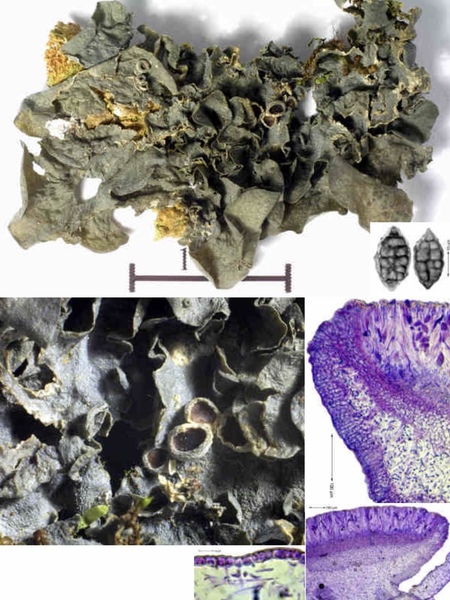

Felix Schumm – CC BY-SA 4.0
Image from: F. Schumm (2008) - Flechten Madeiras, der Kanaren und Azoren. Beck, OHG - ISBN: 978-3-00-023700-3
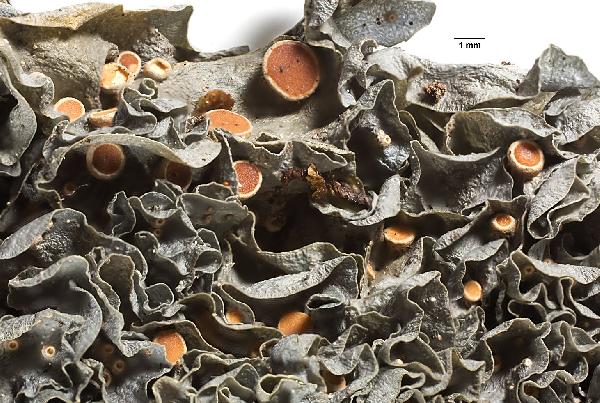
Ulrich Kirschbaum CC BY-SA 4.0 - Source: https://www.thm.de/lse/ulrich-kirschbaum/flechtenbilder
Portugal: Madeira.
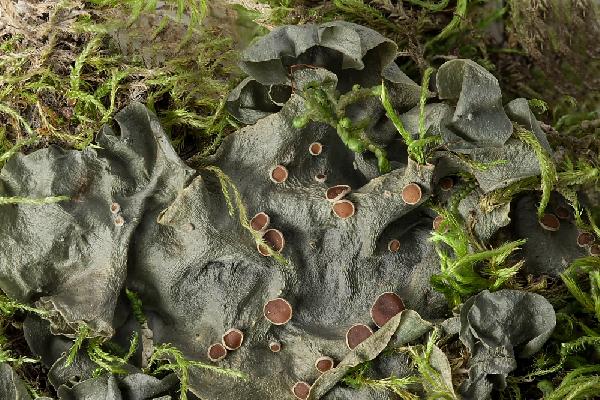
Ulrich Kirschbaum CC BY-SA 4.0 - Source: https://www.thm.de/lse/ulrich-kirschbaum/flechtenbilder
Portugal: Madeira.
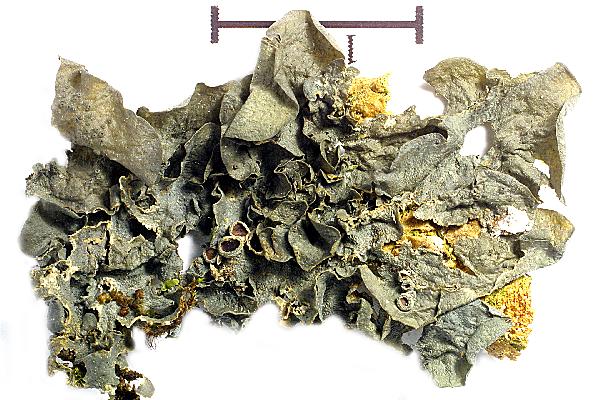

Felix Schumm - CC BY-SA 4.0
[10772], Portugal, Azoren, Sao Miguel: An der Straße SW von Lagoa
das Fumas beim Parkplatz Reservada Florestal de Recreiro do Cerrado
Bezerros, 37°44.632' N, 25°21.939' W, 430 m. Leg. F. Schumm,
03.06.2003, det. F. Schumm, 07.2003.
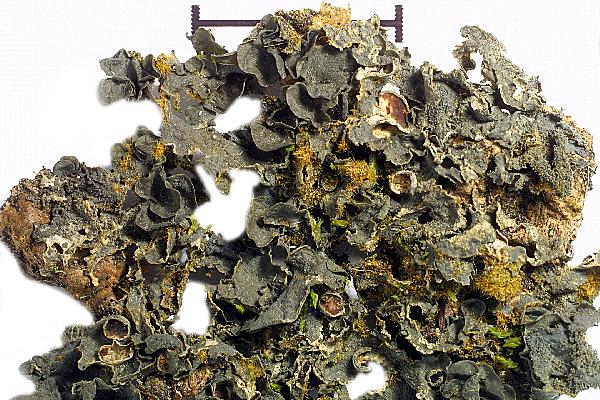

Felix Schumm - CC BY-SA 4.0
[10772], Portugal, Azoren, Sao Miguel: An der Straße SW von Lagoa
das Fumas beim Parkplatz Reservada Florestal de Recreiro do Cerrado
Bezerros, 37°44.632' N, 25°21.939' W, 430 m. Leg. F. Schumm,
03.06.2003, det. F. Schumm, 07.2003.
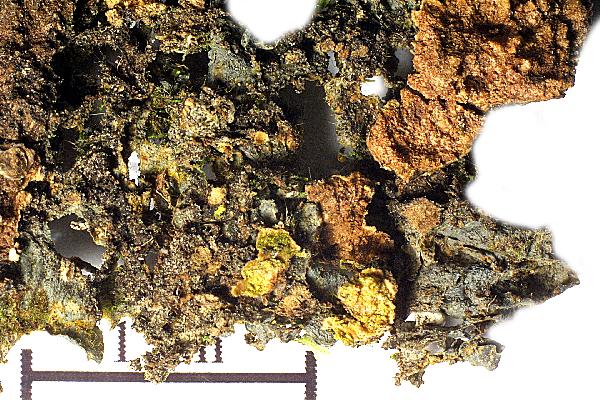

Felix Schumm - CC BY-SA 4.0
[10772], Portugal, Azoren, Sao Miguel: An der Straße SW von Lagoa
das Fumas beim Parkplatz Reservada Florestal de Recreiro do Cerrado
Bezerros, 37°44.632' N, 25°21.939' W, 430 m. Leg. F. Schumm,
03.06.2003, det. F. Schumm, 07.2003.
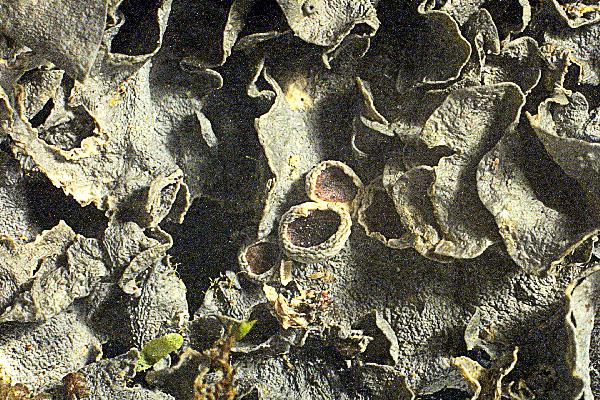

Felix Schumm - CC BY-SA 4.0
[10772], Portugal, Azoren, Sao Miguel: An der Straße SW von Lagoa
das Fumas beim Parkplatz Reservada Florestal de Recreiro do Cerrado
Bezerros, 37°44.632' N, 25°21.939' W, 430 m. Leg. F. Schumm,
03.06.2003, det. F. Schumm, 07.2003.
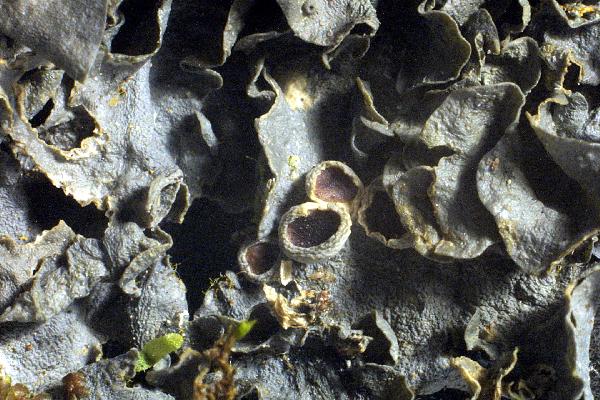

Felix Schumm - CC BY-SA 4.0
[10772], Portugal, Azoren, Sao Miguel: An der Straße SW von Lagoa
das Fumas beim Parkplatz Reservada Florestal de Recreiro do Cerrado
Bezerros, 37°44.632' N, 25°21.939' W, 430 m. Leg. F. Schumm,
03.06.2003, det. F. Schumm, 07.2003.
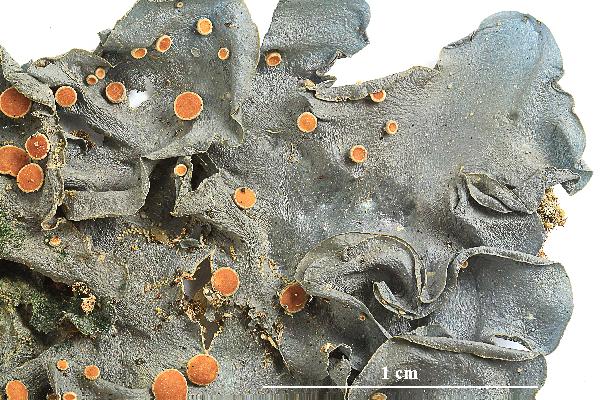

Felix Schumm - CC BY-SA 4.0
[11496], PORTUGAL, MADEIRA: Südlich von Porto da Cruz bei
Portela, im Lorbeerwald am Anfang der Levada zwischen Portela und
Laceimeiros; 32°45' N, 16°50' W, 630 m. Leg. F. Schumm, 28.12.2003,
det. F. Schumm, 01.2004.
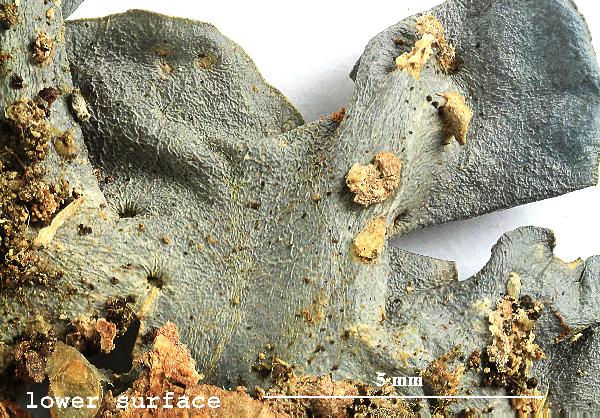

Felix Schumm - CC BY-SA 4.0
[11496], PORTUGAL, MADEIRA: Südlich von Porto da Cruz bei
Portela, im Lorbeerwald am Anfang der Levada zwischen Portela und
Laceimeiros; 32°45' N, 16°50' W, 630 m. Leg. F. Schumm, 28.12.2003,
det. F. Schumm, 01.2004.
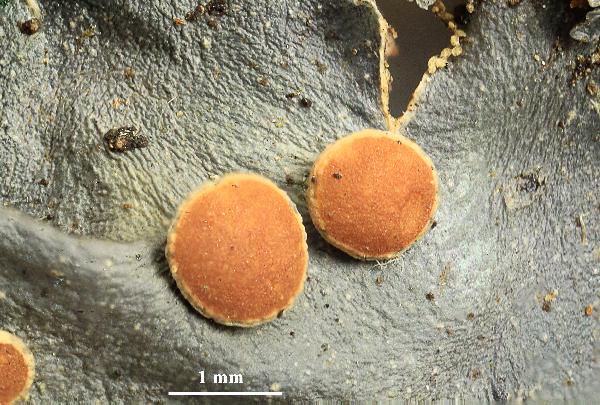

Felix Schumm - CC BY-SA 4.0
[11496], PORTUGAL, MADEIRA: Südlich von Porto da Cruz bei
Portela, im Lorbeerwald am Anfang der Levada zwischen Portela und
Laceimeiros; 32°45' N, 16°50' W, 630 m. Leg. F. Schumm, 28.12.2003,
det. F. Schumm, 01.2004.
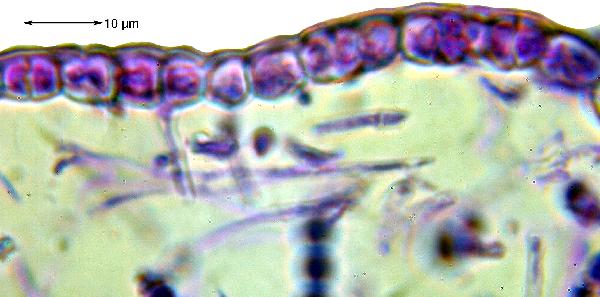

Felix Schumm - CC BY-SA 4.0
[11496], PORTUGAL, MADEIRA: Südlich von Porto da Cruz bei
Portela, im Lorbeerwald am Anfang der Levada zwischen Portela und
Laceimeiros; 32°45' N, 16°50' W, 630 m. Leg. F. Schumm, 28.12.2003,
det. F. Schumm, 01.2004.
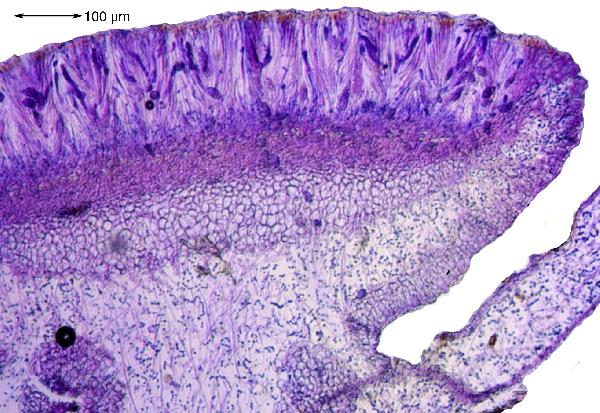

Felix Schumm - CC BY-SA 4.0
[11496], PORTUGAL, MADEIRA: Südlich von Porto da Cruz bei
Portela, im Lorbeerwald am Anfang der Levada zwischen Portela und
Laceimeiros; 32°45' N, 16°50' W, 630 m. Leg. F. Schumm, 28.12.2003,
det. F. Schumm, 01.2004.
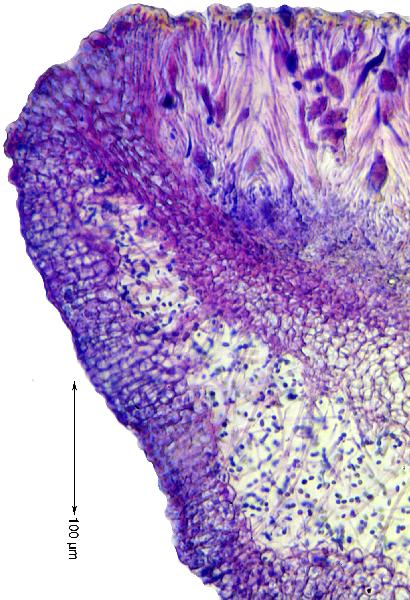

Felix Schumm - CC BY-SA 4.0
[11496], PORTUGAL, MADEIRA: Südlich von Porto da Cruz bei
Portela, im Lorbeerwald am Anfang der Levada zwischen Portela und
Laceimeiros; 32°45' N, 16°50' W, 630 m. Leg. F. Schumm, 28.12.2003,
det. F. Schumm, 01.2004.
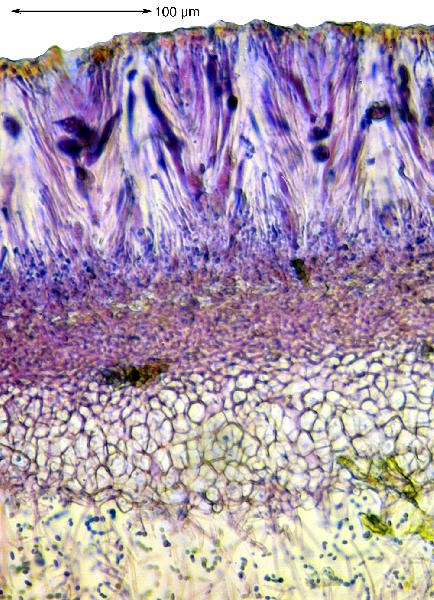

Felix Schumm - CC BY-SA 4.0
[11496], PORTUGAL, MADEIRA: Südlich von Porto da Cruz bei
Portela, im Lorbeerwald am Anfang der Levada zwischen Portela und
Laceimeiros; 32°45' N, 16°50' W, 630 m. Leg. F. Schumm, 28.12.2003,
det. F. Schumm, 01.2004.
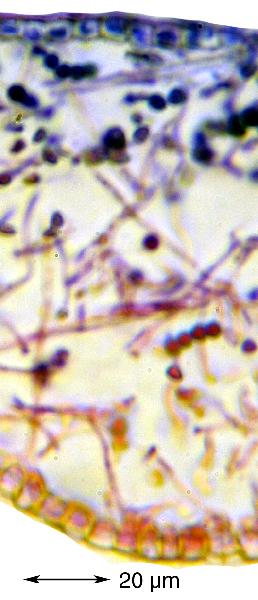

Felix Schumm - CC BY-SA 4.0
[11496], PORTUGAL, MADEIRA: Südlich von Porto da Cruz bei
Portela, im Lorbeerwald am Anfang der Levada zwischen Portela und
Laceimeiros; 32°45' N, 16°50' W, 630 m. Leg. F. Schumm, 28.12.2003,
det. F. Schumm, 01.2004.


Felix Schumm - CC BY-SA 4.0
[11496], PORTUGAL, MADEIRA: Südlich von Porto da Cruz bei
Portela, im Lorbeerwald am Anfang der Levada zwischen Portela und
Laceimeiros; 32°45' N, 16°50' W, 630 m. Leg. F. Schumm, 28.12.2003,
det. F. Schumm, 01.2004.


Felix Schumm - CC BY-SA 4.0
[11496], PORTUGAL, MADEIRA: Südlich von Porto da Cruz bei
Portela, im Lorbeerwald am Anfang der Levada zwischen Portela und
Laceimeiros; 32°45' N, 16°50' W, 630 m. Leg. F. Schumm, 28.12.2003,
det. F. Schumm, 01.2004.


Felix Schumm - CC BY-SA 4.0
[11496], PORTUGAL, MADEIRA: Südlich von Porto da Cruz bei
Portela, im Lorbeerwald am Anfang der Levada zwischen Portela und
Laceimeiros; 32°45' N, 16°50' W, 630 m. Leg. F. Schumm, 28.12.2003,
det. F. Schumm, 01.2004.
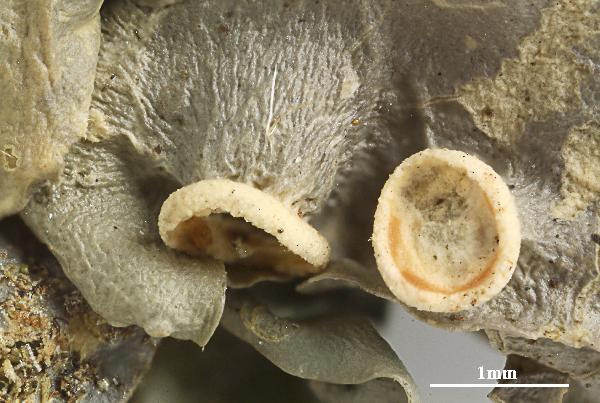

Felix Schumm - CC BY-SA 4.0
[ABL42826], Brazil, Alagoas, Quebrangulo, Pedra Talhada private
area. In Atlantic rain forest on tree bark. 9°15’ S, 36°25’35’’ W, 500-700
m. Leg. M. Cáceres & A. Aptroot (no 42826), 21-23.10.2017. Det. A.
Aptroot, 2017.
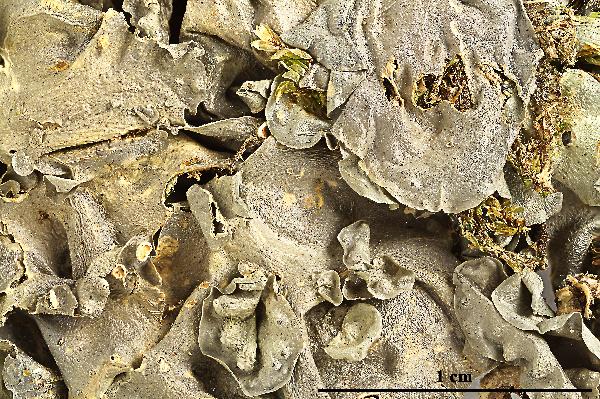

Felix Schumm - CC BY-SA 4.0
[ABL42826], Brazil, Alagoas, Quebrangulo, Pedra Talhada private
area. In Atlantic rain forest on tree bark. 9°15’ S, 36°25’35’’ W, 500-700
m. Leg. M. Cáceres & A. Aptroot (no 42826), 21-23.10.2017. Det. A.
Aptroot, 2017.


Felix Schumm - CC BY-SA 4.0
[LN590], Venezuela, Merida. Distr. Rangel: Zwischen Laguna Mucubaij
und Pico Mucuñuque, etwa 15 km südöstlich von Apartaderos. An
Blütenstielen von Espeletia in Paramo-Vegetation, 3500 m. 8°45' N,
70°45' W. Leg, K.& A. Kalb & López-Figueiras, 07.08.1989. EX K.
KALB: LICHENES NEOTROPICI NR. 590.
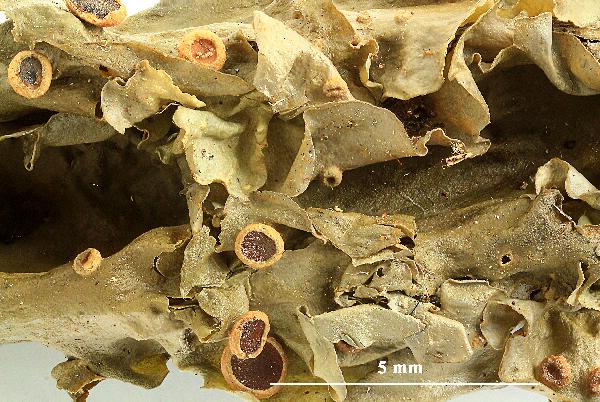

Felix Schumm - CC BY-SA 4.0
[LN590], Venezuela, Merida. Distr. Rangel: Zwischen Laguna Mucubaij
und Pico Mucuñuque, etwa 15 km südöstlich von Apartaderos. An
Blütenstielen von Espeletia in Paramo-Vegetation, 3500 m. 8°45' N,
70°45' W. Leg, K.& A. Kalb & López-Figueiras, 07.08.1989. EX K.
KALB: LICHENES NEOTROPICI NR. 590.
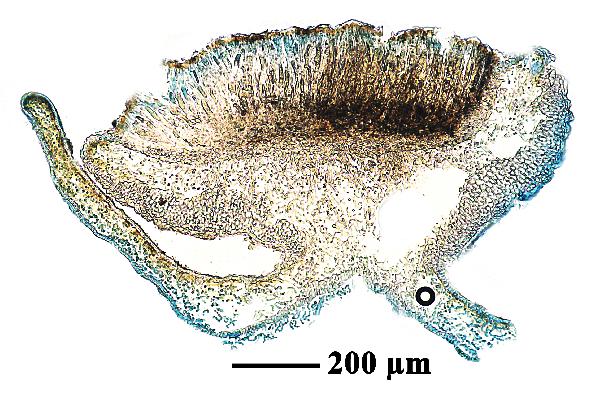

Felix Schumm - CC BY-SA 4.0
[LN590], Venezuela, Merida. Distr. Rangel: Zwischen Laguna Mucubaij
und Pico Mucuñuque, etwa 15 km südöstlich von Apartaderos. An
Blütenstielen von Espeletia in Paramo-Vegetation, 3500 m. 8°45' N,
70°45' W. Leg, K.& A. Kalb & López-Figueiras, 07.08.1989. EX K.
KALB: LICHENES NEOTROPICI NR. 590.
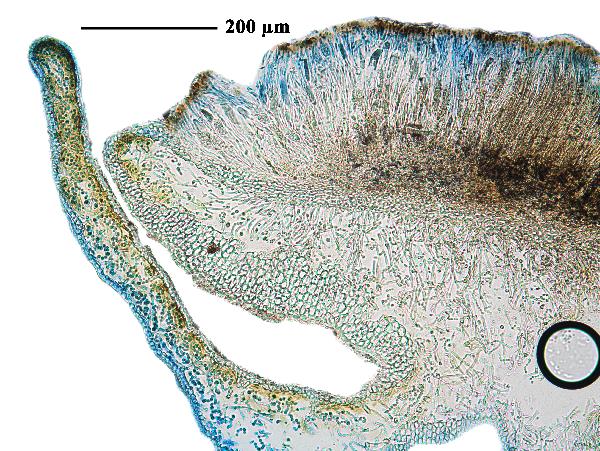

Felix Schumm - CC BY-SA 4.0
[LN590], Venezuela, Merida. Distr. Rangel: Zwischen Laguna Mucubaij
und Pico Mucuñuque, etwa 15 km südöstlich von Apartaderos. An
Blütenstielen von Espeletia in Paramo-Vegetation, 3500 m. 8°45' N,
70°45' W. Leg, K.& A. Kalb & López-Figueiras, 07.08.1989. EX K.
KALB: LICHENES NEOTROPICI NR. 590.


Felix Schumm - CC BY-SA 4.0
[LN590], Venezuela, Merida. Distr. Rangel: Zwischen Laguna Mucubaij
und Pico Mucuñuque, etwa 15 km südöstlich von Apartaderos. An
Blütenstielen von Espeletia in Paramo-Vegetation, 3500 m. 8°45' N,
70°45' W. Leg, K.& A. Kalb & López-Figueiras, 07.08.1989. EX K.
KALB: LICHENES NEOTROPICI NR. 590.


Felix Schumm - CC BY-SA 4.0
[LN590], Venezuela, Merida. Distr. Rangel: Zwischen Laguna Mucubaij
und Pico Mucuñuque, etwa 15 km südöstlich von Apartaderos. An
Blütenstielen von Espeletia in Paramo-Vegetation, 3500 m. 8°45' N,
70°45' W. Leg, K.& A. Kalb & López-Figueiras, 07.08.1989. EX K.
KALB: LICHENES NEOTROPICI NR. 590.


Felix Schumm - CC BY-SA 4.0
[LN590], Venezuela, Merida. Distr. Rangel: Zwischen Laguna Mucubaij
und Pico Mucuñuque, etwa 15 km südöstlich von Apartaderos. An
Blütenstielen von Espeletia in Paramo-Vegetation, 3500 m. 8°45' N,
70°45' W. Leg, K.& A. Kalb & López-Figueiras, 07.08.1989. EX K.
KALB: LICHENES NEOTROPICI NR. 590.
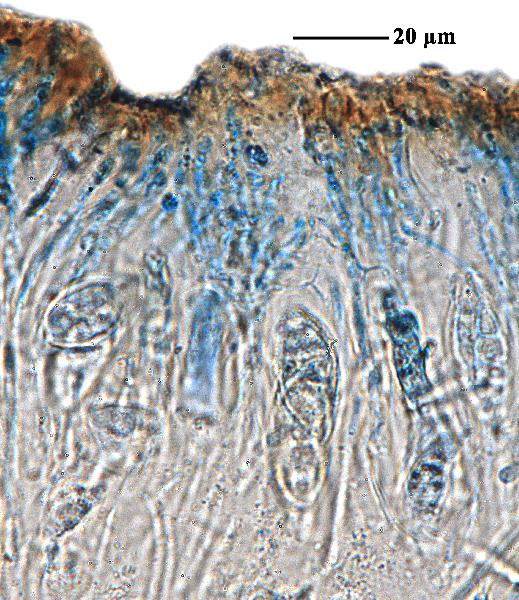

Felix Schumm - CC BY-SA 4.0
[LN590], Venezuela, Merida. Distr. Rangel: Zwischen Laguna Mucubaij
und Pico Mucuñuque, etwa 15 km südöstlich von Apartaderos. An
Blütenstielen von Espeletia in Paramo-Vegetation, 3500 m. 8°45' N,
70°45' W. Leg, K.& A. Kalb & López-Figueiras, 07.08.1989. EX K.
KALB: LICHENES NEOTROPICI NR. 590.
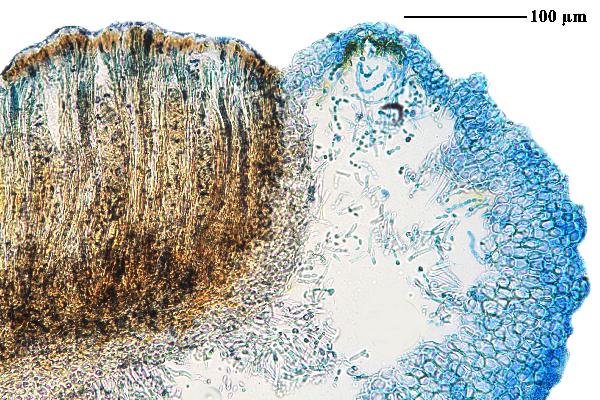

Felix Schumm - CC BY-SA 4.0
[LN590], Venezuela, Merida. Distr. Rangel: Zwischen Laguna Mucubaij
und Pico Mucuñuque, etwa 15 km südöstlich von Apartaderos. An
Blütenstielen von Espeletia in Paramo-Vegetation, 3500 m. 8°45' N,
70°45' W. Leg, K.& A. Kalb & López-Figueiras, 07.08.1989. EX K.
KALB: LICHENES NEOTROPICI NR. 590.
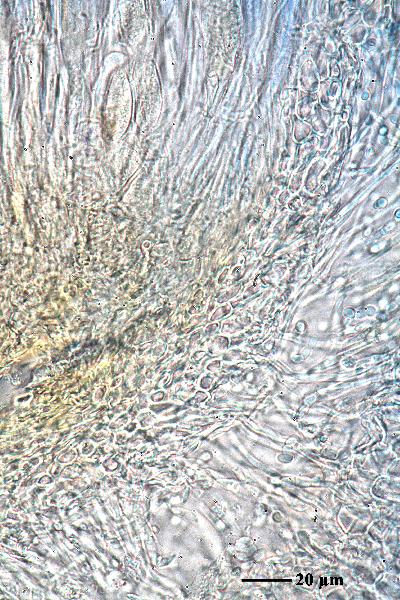

Felix Schumm - CC BY-SA 4.0
[LN590], Venezuela, Merida. Distr. Rangel: Zwischen Laguna Mucubaij
und Pico Mucuñuque, etwa 15 km südöstlich von Apartaderos. An
Blütenstielen von Espeletia in Paramo-Vegetation, 3500 m. 8°45' N,
70°45' W. Leg, K.& A. Kalb & López-Figueiras, 07.08.1989. EX K.
KALB: LICHENES NEOTROPICI NR. 590.


Felix Schumm - CC BY-SA 4.0
[LN590], Venezuela, Merida. Distr. Rangel: Zwischen Laguna Mucubaij
und Pico Mucuñuque, etwa 15 km südöstlich von Apartaderos. An
Blütenstielen von Espeletia in Paramo-Vegetation, 3500 m. 8°45' N,
70°45' W. Leg, K.& A. Kalb & López-Figueiras, 07.08.1989. EX K.
KALB: LICHENES NEOTROPICI NR. 590.
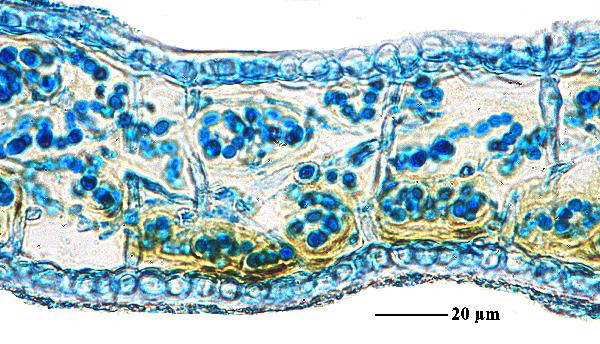

Felix Schumm - CC BY-SA 4.0
[LN590], Venezuela, Merida. Distr. Rangel: Zwischen Laguna Mucubaij
und Pico Mucuñuque, etwa 15 km südöstlich von Apartaderos. An
Blütenstielen von Espeletia in Paramo-Vegetation, 3500 m. 8°45' N,
70°45' W. Leg, K.& A. Kalb & López-Figueiras, 07.08.1989. EX K.
KALB: LICHENES NEOTROPICI NR. 590.
Growth form: Foliose, broad lobed
Substrata: bark
Photobiont: cyanobacteria, filamentous (e.g. Nostoc, Scytonema)
Reproductive strategy: mainly sexual
Most common in areas with a humid-warm climate (e.g. most of Tyrrenian Italy)
Commonnes-rarity: (info)
Alpine belt: absent
Subalpine belt: absent
Oromediterranean belt: absent
Montane belt: extremely rare
Submediterranean belt: extremely rare
Padanian area: absent
Humid submediterranean belt: very rare
Humid mediterranean belt: extremely rare
Dry mediterranean belt: absent

Predictive model
| Herbarium samples |


P.L. Nimis; Owner: Department of Life Sciences, University of Trieste
Herbarium: TSB (1453)
2001/11/26


Felix Schumm – CC BY-SA 4.0
Image from: F. Schumm (2008) - Flechten Madeiras, der Kanaren und Azoren. Beck, OHG - ISBN: 978-3-00-023700-3

Ulrich Kirschbaum CC BY-SA 4.0 - Source: https://www.thm.de/lse/ulrich-kirschbaum/flechtenbilder
Portugal: Madeira.

Ulrich Kirschbaum CC BY-SA 4.0 - Source: https://www.thm.de/lse/ulrich-kirschbaum/flechtenbilder
Portugal: Madeira.


Felix Schumm - CC BY-SA 4.0
[10772], Portugal, Azoren, Sao Miguel: An der Straße SW von Lagoa das Fumas beim Parkplatz Reservada Florestal de Recreiro do Cerrado Bezerros, 37°44.632' N, 25°21.939' W, 430 m. Leg. F. Schumm, 03.06.2003, det. F. Schumm, 07.2003.


Felix Schumm - CC BY-SA 4.0
[10772], Portugal, Azoren, Sao Miguel: An der Straße SW von Lagoa das Fumas beim Parkplatz Reservada Florestal de Recreiro do Cerrado Bezerros, 37°44.632' N, 25°21.939' W, 430 m. Leg. F. Schumm, 03.06.2003, det. F. Schumm, 07.2003.


Felix Schumm - CC BY-SA 4.0
[10772], Portugal, Azoren, Sao Miguel: An der Straße SW von Lagoa das Fumas beim Parkplatz Reservada Florestal de Recreiro do Cerrado Bezerros, 37°44.632' N, 25°21.939' W, 430 m. Leg. F. Schumm, 03.06.2003, det. F. Schumm, 07.2003.


Felix Schumm - CC BY-SA 4.0
[10772], Portugal, Azoren, Sao Miguel: An der Straße SW von Lagoa das Fumas beim Parkplatz Reservada Florestal de Recreiro do Cerrado Bezerros, 37°44.632' N, 25°21.939' W, 430 m. Leg. F. Schumm, 03.06.2003, det. F. Schumm, 07.2003.


Felix Schumm - CC BY-SA 4.0
[10772], Portugal, Azoren, Sao Miguel: An der Straße SW von Lagoa das Fumas beim Parkplatz Reservada Florestal de Recreiro do Cerrado Bezerros, 37°44.632' N, 25°21.939' W, 430 m. Leg. F. Schumm, 03.06.2003, det. F. Schumm, 07.2003.


Felix Schumm - CC BY-SA 4.0
[11496], PORTUGAL, MADEIRA: Südlich von Porto da Cruz bei Portela, im Lorbeerwald am Anfang der Levada zwischen Portela und Laceimeiros; 32°45' N, 16°50' W, 630 m. Leg. F. Schumm, 28.12.2003, det. F. Schumm, 01.2004.


Felix Schumm - CC BY-SA 4.0
[11496], PORTUGAL, MADEIRA: Südlich von Porto da Cruz bei Portela, im Lorbeerwald am Anfang der Levada zwischen Portela und Laceimeiros; 32°45' N, 16°50' W, 630 m. Leg. F. Schumm, 28.12.2003, det. F. Schumm, 01.2004.


Felix Schumm - CC BY-SA 4.0
[11496], PORTUGAL, MADEIRA: Südlich von Porto da Cruz bei Portela, im Lorbeerwald am Anfang der Levada zwischen Portela und Laceimeiros; 32°45' N, 16°50' W, 630 m. Leg. F. Schumm, 28.12.2003, det. F. Schumm, 01.2004.


Felix Schumm - CC BY-SA 4.0
[11496], PORTUGAL, MADEIRA: Südlich von Porto da Cruz bei Portela, im Lorbeerwald am Anfang der Levada zwischen Portela und Laceimeiros; 32°45' N, 16°50' W, 630 m. Leg. F. Schumm, 28.12.2003, det. F. Schumm, 01.2004.


Felix Schumm - CC BY-SA 4.0
[11496], PORTUGAL, MADEIRA: Südlich von Porto da Cruz bei Portela, im Lorbeerwald am Anfang der Levada zwischen Portela und Laceimeiros; 32°45' N, 16°50' W, 630 m. Leg. F. Schumm, 28.12.2003, det. F. Schumm, 01.2004.


Felix Schumm - CC BY-SA 4.0
[11496], PORTUGAL, MADEIRA: Südlich von Porto da Cruz bei Portela, im Lorbeerwald am Anfang der Levada zwischen Portela und Laceimeiros; 32°45' N, 16°50' W, 630 m. Leg. F. Schumm, 28.12.2003, det. F. Schumm, 01.2004.


Felix Schumm - CC BY-SA 4.0
[11496], PORTUGAL, MADEIRA: Südlich von Porto da Cruz bei Portela, im Lorbeerwald am Anfang der Levada zwischen Portela und Laceimeiros; 32°45' N, 16°50' W, 630 m. Leg. F. Schumm, 28.12.2003, det. F. Schumm, 01.2004.


Felix Schumm - CC BY-SA 4.0
[11496], PORTUGAL, MADEIRA: Südlich von Porto da Cruz bei Portela, im Lorbeerwald am Anfang der Levada zwischen Portela und Laceimeiros; 32°45' N, 16°50' W, 630 m. Leg. F. Schumm, 28.12.2003, det. F. Schumm, 01.2004.


Felix Schumm - CC BY-SA 4.0
[11496], PORTUGAL, MADEIRA: Südlich von Porto da Cruz bei Portela, im Lorbeerwald am Anfang der Levada zwischen Portela und Laceimeiros; 32°45' N, 16°50' W, 630 m. Leg. F. Schumm, 28.12.2003, det. F. Schumm, 01.2004.


Felix Schumm - CC BY-SA 4.0
[11496], PORTUGAL, MADEIRA: Südlich von Porto da Cruz bei Portela, im Lorbeerwald am Anfang der Levada zwischen Portela und Laceimeiros; 32°45' N, 16°50' W, 630 m. Leg. F. Schumm, 28.12.2003, det. F. Schumm, 01.2004.


Felix Schumm - CC BY-SA 4.0
[11496], PORTUGAL, MADEIRA: Südlich von Porto da Cruz bei Portela, im Lorbeerwald am Anfang der Levada zwischen Portela und Laceimeiros; 32°45' N, 16°50' W, 630 m. Leg. F. Schumm, 28.12.2003, det. F. Schumm, 01.2004.


Felix Schumm - CC BY-SA 4.0
[ABL42826], Brazil, Alagoas, Quebrangulo, Pedra Talhada private area. In Atlantic rain forest on tree bark. 9°15’ S, 36°25’35’’ W, 500-700 m. Leg. M. Cáceres & A. Aptroot (no 42826), 21-23.10.2017. Det. A. Aptroot, 2017.


Felix Schumm - CC BY-SA 4.0
[ABL42826], Brazil, Alagoas, Quebrangulo, Pedra Talhada private area. In Atlantic rain forest on tree bark. 9°15’ S, 36°25’35’’ W, 500-700 m. Leg. M. Cáceres & A. Aptroot (no 42826), 21-23.10.2017. Det. A. Aptroot, 2017.


Felix Schumm - CC BY-SA 4.0
[LN590], Venezuela, Merida. Distr. Rangel: Zwischen Laguna Mucubaij und Pico Mucuñuque, etwa 15 km südöstlich von Apartaderos. An Blütenstielen von Espeletia in Paramo-Vegetation, 3500 m. 8°45' N, 70°45' W. Leg, K.& A. Kalb & López-Figueiras, 07.08.1989. EX K. KALB: LICHENES NEOTROPICI NR. 590.


Felix Schumm - CC BY-SA 4.0
[LN590], Venezuela, Merida. Distr. Rangel: Zwischen Laguna Mucubaij und Pico Mucuñuque, etwa 15 km südöstlich von Apartaderos. An Blütenstielen von Espeletia in Paramo-Vegetation, 3500 m. 8°45' N, 70°45' W. Leg, K.& A. Kalb & López-Figueiras, 07.08.1989. EX K. KALB: LICHENES NEOTROPICI NR. 590.


Felix Schumm - CC BY-SA 4.0
[LN590], Venezuela, Merida. Distr. Rangel: Zwischen Laguna Mucubaij und Pico Mucuñuque, etwa 15 km südöstlich von Apartaderos. An Blütenstielen von Espeletia in Paramo-Vegetation, 3500 m. 8°45' N, 70°45' W. Leg, K.& A. Kalb & López-Figueiras, 07.08.1989. EX K. KALB: LICHENES NEOTROPICI NR. 590.


Felix Schumm - CC BY-SA 4.0
[LN590], Venezuela, Merida. Distr. Rangel: Zwischen Laguna Mucubaij und Pico Mucuñuque, etwa 15 km südöstlich von Apartaderos. An Blütenstielen von Espeletia in Paramo-Vegetation, 3500 m. 8°45' N, 70°45' W. Leg, K.& A. Kalb & López-Figueiras, 07.08.1989. EX K. KALB: LICHENES NEOTROPICI NR. 590.


Felix Schumm - CC BY-SA 4.0
[LN590], Venezuela, Merida. Distr. Rangel: Zwischen Laguna Mucubaij und Pico Mucuñuque, etwa 15 km südöstlich von Apartaderos. An Blütenstielen von Espeletia in Paramo-Vegetation, 3500 m. 8°45' N, 70°45' W. Leg, K.& A. Kalb & López-Figueiras, 07.08.1989. EX K. KALB: LICHENES NEOTROPICI NR. 590.


Felix Schumm - CC BY-SA 4.0
[LN590], Venezuela, Merida. Distr. Rangel: Zwischen Laguna Mucubaij und Pico Mucuñuque, etwa 15 km südöstlich von Apartaderos. An Blütenstielen von Espeletia in Paramo-Vegetation, 3500 m. 8°45' N, 70°45' W. Leg, K.& A. Kalb & López-Figueiras, 07.08.1989. EX K. KALB: LICHENES NEOTROPICI NR. 590.


Felix Schumm - CC BY-SA 4.0
[LN590], Venezuela, Merida. Distr. Rangel: Zwischen Laguna Mucubaij und Pico Mucuñuque, etwa 15 km südöstlich von Apartaderos. An Blütenstielen von Espeletia in Paramo-Vegetation, 3500 m. 8°45' N, 70°45' W. Leg, K.& A. Kalb & López-Figueiras, 07.08.1989. EX K. KALB: LICHENES NEOTROPICI NR. 590.


Felix Schumm - CC BY-SA 4.0
[LN590], Venezuela, Merida. Distr. Rangel: Zwischen Laguna Mucubaij und Pico Mucuñuque, etwa 15 km südöstlich von Apartaderos. An Blütenstielen von Espeletia in Paramo-Vegetation, 3500 m. 8°45' N, 70°45' W. Leg, K.& A. Kalb & López-Figueiras, 07.08.1989. EX K. KALB: LICHENES NEOTROPICI NR. 590.


Felix Schumm - CC BY-SA 4.0
[LN590], Venezuela, Merida. Distr. Rangel: Zwischen Laguna Mucubaij und Pico Mucuñuque, etwa 15 km südöstlich von Apartaderos. An Blütenstielen von Espeletia in Paramo-Vegetation, 3500 m. 8°45' N, 70°45' W. Leg, K.& A. Kalb & López-Figueiras, 07.08.1989. EX K. KALB: LICHENES NEOTROPICI NR. 590.


Felix Schumm - CC BY-SA 4.0
[LN590], Venezuela, Merida. Distr. Rangel: Zwischen Laguna Mucubaij und Pico Mucuñuque, etwa 15 km südöstlich von Apartaderos. An Blütenstielen von Espeletia in Paramo-Vegetation, 3500 m. 8°45' N, 70°45' W. Leg, K.& A. Kalb & López-Figueiras, 07.08.1989. EX K. KALB: LICHENES NEOTROPICI NR. 590.


Felix Schumm - CC BY-SA 4.0
[LN590], Venezuela, Merida. Distr. Rangel: Zwischen Laguna Mucubaij und Pico Mucuñuque, etwa 15 km südöstlich von Apartaderos. An Blütenstielen von Espeletia in Paramo-Vegetation, 3500 m. 8°45' N, 70°45' W. Leg, K.& A. Kalb & López-Figueiras, 07.08.1989. EX K. KALB: LICHENES NEOTROPICI NR. 590.


 INDEX FUNGORUM
INDEX FUNGORUM
 GBIF
GBIF
 DOLICHENS
DOLICHENS
